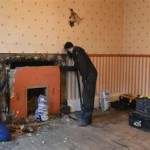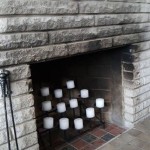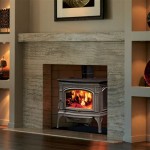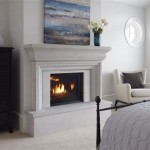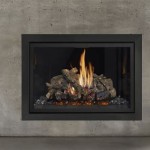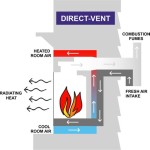Mantels for Brick Fireplaces: A Comprehensive Guide
Brick fireplaces, with their inherent rustic charm and enduring appeal, serve as focal points in many homes. A well-chosen mantel can significantly enhance the aesthetic of a brick fireplace, providing a surface for displaying decorative items, artwork, or simply adding a touch of elegance and sophistication. This article explores the various aspects of selecting, installing, and maintaining mantels for brick fireplaces, offering insights into design considerations, material options, installation techniques, and safety guidelines.
Design Considerations for Brick Fireplace Mantels
The design of a mantel for a brick fireplace should complement the overall architectural style of the room and the existing character of the brickwork. Several factors influence the selection of an appropriate design, including the size and shape of the fireplace, the color and texture of the brick, and the desired aesthetic outcome. A cohesive design enhances the fireplace's visual impact and integrates it seamlessly into the living space.
Scale is a crucial factor. A mantel that is too large for the fireplace can overwhelm the space, while one that is too small may appear insignificant. The width of the mantel should ideally extend a few inches beyond the edges of the fireplace opening on each side. The height of the mantel should be proportional to the height of the fireplace itself, typically positioned at a comfortable eye level when seated in the room. A general rule of thumb is to place the mantel 12 inches above the fireplace opening, but this can vary based on personal preference and the size of the firebox.
Style is another important consideration. Traditional brick fireplaces often benefit from classic mantel designs featuring ornate carvings, raised paneling, or intricate moldings. These designs can evoke a sense of timeless elegance and complement the inherent formality of a traditional setting. Modern brick fireplaces, on the other hand, may be better suited to minimalist mantel designs with clean lines, simple shapes, and a focus on functionality. These designs emphasize the inherent beauty of the brickwork and create a sense of understated sophistication.
The color and texture of the brick should also influence the choice of mantel design. For example, a light-colored brick fireplace may pair well with a dark-stained wood mantel, creating a striking contrast and adding visual interest. Conversely, a dark-colored brick fireplace may benefit from a light-colored mantel, which can brighten the space and prevent the fireplace from feeling too heavy. The texture of the brick should also be considered. A rough, textured brick may be best complemented by a smooth, polished mantel, while a smooth, uniform brick may pair well with a more rustic, textured mantel.
Beyond aesthetics, consider the functionality of the mantel. Will it primarily serve as a decorative element, or will it be used to display items such as photographs, artwork, or candles? If the mantel will be used for display, ensure that it is deep enough to accommodate the desired items without appearing cluttered. Also, consider the weight-bearing capacity of the mantel, especially if it will be used to support heavy objects.
Material Options for Brick Fireplace Mantels
The choice of material significantly impacts the appearance, durability, and maintenance requirements of a brick fireplace mantel. Various materials offer distinct aesthetic qualities and performance characteristics, catering to diverse design preferences and budgetary constraints.
Wood is a popular choice for fireplace mantels due to its versatility, warmth, and natural beauty. Different types of wood offer varying levels of durability, grain patterns, and color tones. Hardwoods such as oak, maple, and cherry are known for their strength, durability, and rich colors, making them ideal for traditional mantel designs. Softwoods such as pine and cedar are more affordable options that can be stained or painted to achieve a variety of looks. Reclaimed wood, with its inherent character and rustic appeal, is another popular choice for mantels, offering a unique and environmentally friendly option.
Stone is another excellent option for brick fireplace mantels, offering a sense of timeless elegance and natural beauty. Different types of stone, such as marble, granite, and limestone, offer varying levels of durability, color variations, and veining patterns. Marble is known for its luxurious appearance and smooth, polished surface, while granite is valued for its strength and resistance to heat. Limestone offers a more subtle and understated look with its natural texture and warm colors. Stone mantels are typically more expensive than wood mantels but offer exceptional durability and require minimal maintenance.
Concrete is gaining popularity as a material for fireplace mantels, offering a modern and industrial aesthetic. Concrete mantels can be cast in a variety of shapes and sizes and can be customized with different colors and textures. Concrete is also a durable and heat-resistant material, making it a practical choice for fireplaces. However, concrete mantels can be heavy and may require professional installation.
Metal is another option for fireplace mantels, offering a sleek and contemporary look. Different types of metal, such as steel, iron, and copper, offer varying levels of durability, corrosion resistance, and aesthetic appeal. Steel mantels are known for their strength and clean lines, while iron mantels offer a more rustic and traditional look. Copper mantels can add warmth and character to a fireplace with their natural patina. Metal mantels are typically more expensive than wood mantels and may require specialized installation techniques.
When selecting a material for a brick fireplace mantel, consider the overall style of the room, the existing color palette, and the desired level of maintenance. Choose a material that complements the brickwork and enhances the fireplace's aesthetic appeal.
Installation and Safety Guidelines for Brick Fireplace Mantels
Proper installation is crucial for ensuring the safety and stability of a brick fireplace mantel. Incorrect installation can lead to structural damage, fire hazards, and personal injury. Adhering to safety guidelines and following proper installation techniques is essential for a successful and secure mantel installation.
Before beginning the installation process, carefully measure the fireplace opening and the surrounding wall area. Determine the desired height and width of the mantel and ensure that it is properly proportioned to the fireplace. Gather all necessary tools and materials, including a level, drill, masonry bits, screws, anchors, and construction adhesive.
Locating the studs or support structure behind the brick is critical for securely mounting the mantel. Use a stud finder to identify the studs or furring strips behind the brick. If studs are not readily accessible, consider using masonry anchors or screws designed for brick applications. These anchors provide a secure and reliable attachment point for the mantel.
Drilling into brick requires specialized techniques and tools. Use a masonry drill bit and apply slow, steady pressure to create pilot holes for the screws or anchors. Avoid using excessive force, which can crack or damage the brick. Ensure that the pilot holes are deep enough to accommodate the length of the screws or anchors.
Apply construction adhesive to the back of the mantel before attaching it to the brick wall. The adhesive provides additional support and helps to secure the mantel in place. Position the mantel carefully and use a level to ensure that it is perfectly horizontal. Secure the mantel to the brick wall using screws or anchors, tightening them gradually to avoid over-tightening and damaging the brick.
Maintaining a safe distance between the mantel and the fireplace opening is crucial for preventing fire hazards. The National Fire Protection Association (NFPA) recommends maintaining a minimum clearance of 12 inches between the top of the fireplace opening and the bottom of a combustible mantel. This clearance helps to prevent the mantel from overheating and potentially igniting. If the mantel is made of a non-combustible material, such as stone or concrete, the clearance requirement may be reduced.
Inspect the mantel regularly for signs of damage, such as cracks, warping, or loose screws. Repair any damage promptly to prevent further deterioration and ensure the stability of the mantel. Clean the mantel regularly using a mild detergent and a soft cloth to remove dust and debris. Avoid using abrasive cleaners or harsh chemicals, which can damage the finish of the mantel.
If you are not comfortable with installing a brick fireplace mantel yourself, consider hiring a qualified professional. A professional installer has the expertise and experience to ensure that the mantel is installed safely and securely. Professional installation can also provide peace of mind and protect your investment.

How To Install A Mantel On Brick Fireplace 1905 Farmhouse

Spring Inspired Mantle Brick Fireplace Makeover Mantel Decor

30 Timeless Wood Mantels For Brick Fireplace Designs

30 Timeless Wood Mantels For Brick Fireplace Designs

Spring Inspired Mantle Fireplace Decor Farmhouse

How To Install A Floating Mantle The Easy Way In Just One Afternoon

Fall Decor For Brick Fireplaces And Mantels Watsontown

Brick Fireplace Modern Farmhouse Mantels

Our Cozy Rustic Chic Fall Red Brick Fireplace Mantel Decor Falldecor Fireplac Fireplaces Design

7 Design Ideas Using Dark Wood Fireplace Mantels Elmwood Reclaimed Timber


